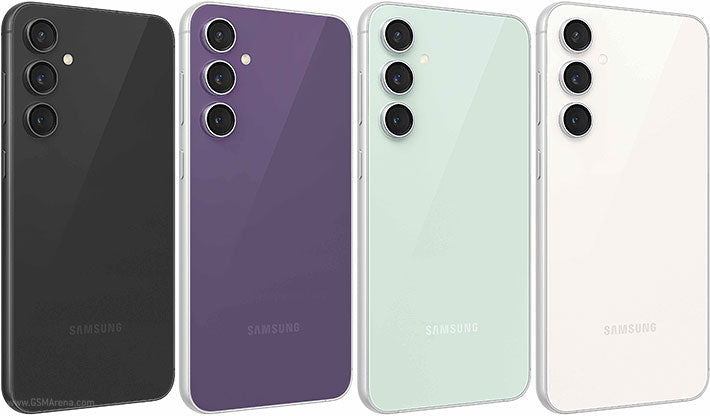
Beyond Flagships: Why the Mid-Range Market is the New Battleground for Android
For years, the rhythm of the mobile industry was dictated by the launch of ultra-premium flagship devices. The latest Samsung Galaxy S, Google Pixel Pro, or OnePlus numbered series would dominate headlines, setting the technological pace for the year. Consumers were conditioned to believe that true innovation and a premium experience were exclusive to devices priced north of $1,000. However, a seismic shift is underway. The most dynamic, competitive, and arguably most important segment of the mobile landscape is no longer the stratosphere of flagships but the bustling, aggressive mid-range market. This is where the real battle for the hearts, minds, and wallets of the majority of consumers is being fought.
Recent industry movements, such as HMD Global—the company behind modern Nokia phones—launching its own branded devices squarely aimed at this segment, underscore this trend. It’s a tacit acknowledgment that the definition of a “good” phone has fundamentally changed. The trickle-down of premium features has become a torrent, flooding the sub-$600 category with capabilities once reserved for the elite. This evolution is forcing every manufacturer to rethink their strategy, focusing on value, longevity, and a holistic user experience. This article delves into this mid-range revolution, exploring why it’s happening, what defines a modern mid-tier device, and what it means for the future of Android Phones and the broader ecosystem of Android Gadgets.
The Shifting Sands: Understanding the Rise of the Android Mid-Range
The ascendancy of the mid-range smartphone isn’t a single event but the result of converging economic and technological factors. As flagship prices have crept ever higher, often with only iterative improvements to show for it, a significant portion of the market has begun to question the value proposition. This “value-consciousness” has created a fertile ground for devices that offer 80-90% of the flagship experience for 50% of the price.
The End of the “Flagship-Only” Era
In the past, purchasing a mid-range phone often felt like a significant compromise. Users had to contend with sluggish performance, subpar plastic builds, low-resolution LCD screens, and cameras that struggled in anything but perfect lighting. Today, that narrative has been completely rewritten. The maturation of mobile technology means that even components from two or three years ago are more than capable of delivering a smooth, satisfying experience. This has allowed manufacturers to build powerful devices without relying on the most expensive, cutting-edge parts. Economic pressures, from global inflation to a more discerning consumer base, have accelerated this shift, making the mid-range not just a viable alternative, but the default, intelligent choice for many.
Redefining the “Mid-Range” Specification Sheet
What exactly constitutes a mid-range phone in today’s market? The specifications are surprisingly robust and would have been considered high-end just a few years ago. Here’s a typical profile:

- Display: 6.5 to 6.7-inch AMOLED or OLED panels with FHD+ resolution and, crucially, a 120Hz refresh rate for fluid scrolling and animations. Peak brightness levels often exceed 1000 nits, making them great for outdoor use.
- Processor: Capable chipsets like the Qualcomm Snapdragon 7 Gen series or MediaTek’s Dimensity 7000 and 8000 series. These SoCs provide ample power for daily tasks, social media, content streaming, and even demanding games at respectable settings.
- Camera: Multi-lens systems are standard, often led by a high-resolution main sensor (50MP or 108MP) with Optical Image Stabilization (OIS). While they may lack the advanced telephoto lenses of flagships, their primary and ultrawide cameras, powered by sophisticated computational photography, produce stunning results.
- Battery & Charging: Large batteries (typically 5,000mAh) are the norm, providing all-day and often two-day longevity. Fast charging has also become a key battleground, with speeds ranging from 30W to over 100W in some cases.
- Build & Design: While plastic frames are common, many mid-rangers now feature glass backs, slim profiles, and IP ratings for dust and water resistance, blurring the lines between them and their premium counterparts.
A Deeper Dive: Deconstructing the Modern Mid-Range Powerhouse
The excellence of modern mid-range Android Phones isn’t just about a checklist of specifications. It’s about the intelligent integration of hardware and software to create a cohesive and reliable user experience. Understanding the key components reveals how manufacturers are achieving this delicate balance of cost and performance.
The Chipset Conundrum: Performance Where It Counts
The heart of any smartphone is its System-on-a-Chip (SoC). In the mid-range, the rivalry between Qualcomm and MediaTek has spurred incredible innovation. Qualcomm’s Snapdragon 7+ Gen 2, for example, brought near-flagship CPU and GPU performance to the upper mid-range, effectively democratizing high-end gaming and processing power. Similarly, MediaTek’s Dimensity 8000 series has been praised for its sustained performance and thermal efficiency, making it a popular choice for devices that prioritize battery life and consistency.
The key insight for consumers is that the performance gap between a top-tier mid-range chip and a flagship one is often imperceptible in day-to-day use. Apps open instantly, multitasking is seamless, and user interfaces are fluid. The primary difference emerges in niche, high-demand scenarios like 4K video editing on-device or playing the most graphically intensive games at their absolute highest settings—tasks that a small fraction of users actually perform.
Computational Photography: The Great Equalizer
Perhaps the most significant advancement in mid-range phones has been in photography. While flagships still lead with larger sensors and more versatile lens systems (e.g., periscope zooms), the software side of the equation has leveled the playing field dramatically. This is where computational photography comes in.
A prime case study is Google’s Pixel “a” series. These phones have consistently used less impressive camera hardware than their competitors but have delivered superior photos thanks to Google’s world-class image processing algorithms. Features like Night Sight, Portrait Mode, and Super Res Zoom are driven by software, not just hardware. Other brands are following suit, using AI to enhance detail, improve dynamic range, and reduce noise. This means a user with a $500 phone can now capture images that, just a few years ago, would have required a dedicated DSLR camera.
The Ecosystem Effect: It’s More Than Just the Phone
A smartphone doesn’t exist in a vacuum. Its value is amplified by the ecosystem of software, services, and connected devices that surround it. In the mid-range battle, a strong ecosystem is rapidly becoming a crucial differentiator, and the latest Android News often highlights these expanding connections.

The Rise of Affordable Android Gadgets
Manufacturers understand that a customer who buys a phone is also a potential customer for earbuds, a smartwatch, or a tablet. The mid-range strategy is therefore expanding to the entire portfolio of Android Gadgets. Brands like Xiaomi, Realme, and Nothing’s CMF line are releasing affordable yet feature-rich TWS earbuds and smartwatches that integrate seamlessly with their phones. Samsung offers its Fan Edition (FE) line of gadgets, which bring premium features from its flagship Galaxy Watch and Buds to a more accessible price point. This creates a “sticky” ecosystem where the combined value of the devices is greater than the sum of their parts, encouraging brand loyalty without demanding a flagship-level investment.
Software Support as a Pillar of Value
Historically, a major drawback of mid-range Android phones was poor software support. Devices would often launch with an older version of Android and receive just one major OS update, if any. This is changing fast. It has become a key marketing point and a genuine measure of a device’s long-term value.
- The Gold Standard: Google and Samsung are leading the charge. Google promises 7 years of OS, security, and Feature Drop updates for its Pixel phones, including the mid-range “a” series. Samsung offers 4 generations of OS upgrades and 5 years of security patches for many of its Galaxy A-series devices.
- The Industry Shift: This commitment is forcing other manufacturers to step up. Brands like OnePlus and Nothing are also extending their software support windows. A phone that will be secure and up-to-date for 4-5 years is a much better investment than one that will be abandoned after 18 months, regardless of its initial hardware prowess.
Navigating the Mid-Range Maze: Practical Advice and Recommendations
With so many excellent options available, choosing the right mid-range phone can be overwhelming. Focusing on personal priorities and avoiding common marketing traps is key to making a smart purchase.

Best Practices for Buyers
Before you buy, ask yourself what matters most to you. Create a hierarchy of needs to guide your decision:
- For the Photographer: If camera quality is your top priority, the Google Pixel “a” series is almost always the top contender. Its computational photography prowess is unmatched at its price point.
- For the Power User & Gamer: Look for devices with the latest mid-range chips like the Snapdragon 7+ Gen series or high-end MediaTek Dimensity chips. Brands like Poco and Realme often focus on delivering maximum performance for the price.
- For the All-Rounder: If you want a reliable device with a great screen, long battery life, and best-in-class software support, Samsung’s Galaxy A-series (specifically the A5x line) is a consistently safe and excellent bet.
- For the Software Purist: If you value a clean, bloatware-free experience, consider a Google Pixel, a Motorola device, or a phone from HMD, all of which typically offer a near-stock Android experience.
Common Pitfalls to Avoid
- The Megapixel Myth: Don’t be swayed by incredibly high megapixel counts (e.g., 200MP). Sensor size, lens quality, and image processing software are far more important. A well-optimized 50MP sensor will almost always outperform a poorly implemented 200MP one.
- Ignoring Software Updates: A phone with powerful hardware is useless if its software is insecure or outdated. Always check the manufacturer’s stated update policy before buying. A promise of 4+ years of support is a strong indicator of a quality product.
- Overlooking the User Experience: Spec sheets don’t tell the whole story. Read and watch reviews from trusted sources that focus on the day-to-day experience. How is the battery life in the real world? Is the software buggy? Are there too many pre-installed ads and bloatware? These factors will impact your satisfaction far more than a benchmark score.
Conclusion: The Consumer is the Ultimate Winner
The intense competition in the mid-range Android market signals a fundamental maturation of the smartphone industry. The era of needing to spend a fortune to get a fantastic, reliable, and enjoyable mobile experience is definitively over. The focus has shifted from raw, often excessive, power to balanced, thoughtful, and long-lasting value. Companies like HMD re-entering the fray with a clear mid-range focus, alongside established players like Samsung, Google, and Xiaomi, are fueling a cycle of innovation that directly benefits the consumer.
As a result, users now have access to a wealth of choice, with powerful Android Phones offering brilliant displays, versatile cameras, and long-term software support at accessible price points. This mid-range revolution is not just about cheaper phones; it’s about smarter phones that deliver a premium, sustainable experience for years to come. For the foreseeable future, this is where the most exciting developments in the Android world will unfold.



